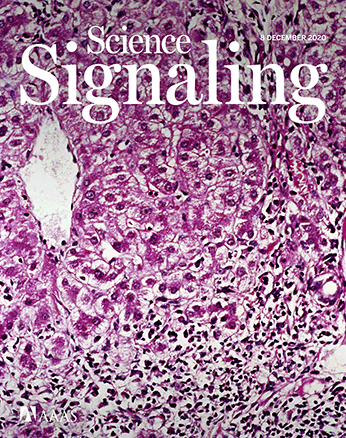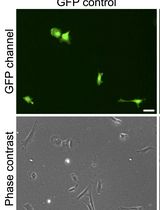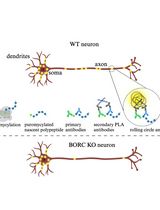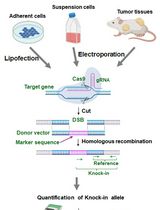- EN - English
- CN - 中文
Lentivirus-mediated Conditional Gene Expression
慢病毒介导的条件基因表达
(*contributed equally to this work) 发布: 2021年11月05日第11卷第21期 DOI: 10.21769/BioProtoc.4205 浏览次数: 6834
评审: Pilar Villacampa AlcubierreRajesh ThippeshappaAnonymous reviewer(s)
Abstract
The ability to identify the role of a particular gene within a system is dependent on control of the expression of that gene. In this protocol, we describe a method for stable, conditional expression of Nod-Like receptors (NLRs) in THP-1 cells using a lentiviral expression system. This system combines all the necessary components for tetracycline-inducible gene expression in a single lentivector with constitutive co-expression of a selection marker, which is an efficient means for controlling gene expression using a single viral infection of cells. This is done in a third generation lentiviral expression platform that improves the safety of lentiviruses and allows for greater gene expression than previous lentiviral platforms. The lentiviral expression plasmid is first engineered to contain the gene of interest driven by a TRE (tetracycline response element) promoter in a simple gateway cloning step and is then co-transfected into HEK293T cells, along with packaging and envelope plasmids to generate the virus. The virus is used to infect a cell type of interest at a low MOI so that the majority of the transduced cells contain a single viral integration. Infected cells are grown under selection, and viral integration is validated by qPCR. Gene expression in stably transduced cells is induced with doxycycline and validated by qPCR, immunoblot, and flow cytometry. This flexible lentiviral expression platform may be used for stable and robust induction of a gene of interest in a range of cells for multiple applications.
Graphic abstract:

Schematic overview of lentiviral transduction of THP-1 cells.
Background
A crucial technique for studying functional responses in molecular biology is the ability to regulate the expression of a gene. Constitutive gene expression systems have allowed researchers to explore gene responses only if prolonged overexpression is non-toxic. Such systems can also lead to the development of compensatory mechanisms within a cell that can mask functional phenotypes (El-Brolosy et al., 2019). Inducible expression systems are a favored alternative to constitutive expression, giving researchers the ability to switch genes on and off or titrate the level of gene expression, with fewer side effects and greater efficiency. One advantage of such conditional expression is the ability to regulate gene expression in a quantitative, temporally-regulated, and reversible manner that more accurately reveals the direct result of a given genetic change. The tetracycline-controlled operator system containing the TRE promoter provides reversible gene expression with a large induction range at low concentrations of a drug that is non-toxic to mammalian cells. The TRE promoter contains a modified Tet response element consisting of seven repeats of a 36-nt sequence that contains the 19-bp Tet operator sequence (TCCCTATCAGTGATAGAGA). This Tet response element is positioned upstream of a minimal CMV promoter sequence, which lacks the enhancer present in the native CMV promoter. Consequently, the TRE promoter is silent in the absence of binding of the tetracycline responsive rtTA3 regulatory protein. Advances in the system have optimized the reverse Tet transactivator (rtTA) component for improved drug sensitivity and activity and, more importantly, to show no activity in the absence of tetracycline or doxycycline (DOX, a tetracycline analog), thus reducing the leakage of the system (Zhou et al., 2006; Yamada et al., 2018). Nevertheless, it should be noted that tetracycline-derived contaminants are often present in cell culture sera; this poses a challenge for Tet-based systems, but this issue can be avoided by using tetracycline-free serum.
Lentiviruses provide an efficient vehicle for facilitating the establishment of inducible gene expression within a cell, particularly because they are able to infect many different dividing and non-dividing cell types (Naldini et al., 1996; Reiser et al., 1996), making lentiviral systems an essential tool for introducing exogenous genes into difficult to transduce targets such as primary cells. Although lentiviral platforms do pose the risk of endogenous gene disruption, the system described here packages all components into a single vector platform so that only a single viral infection per cell is necessary for tet-inducible gene expression (Figure 1A). This eliminates the need for multiple viral infections and limits the possible number of random genome integrations, thereby limiting the chance of off-target effects on cell physiology (Connolly et al., 2002). The constitutively expressed Neo/Venus transduction marker contained in the system allows for easy enrichment of the transduced cell population and can also be easily replaced with another selection marker (e.g., any antibiotic or cell surface marker) to optimize the system for a range of cell types and applications. This not only makes the system highly tractable, but the development of third generation lentiviral vectors, such as pSLIK (Shin et al., 2006), which separate the minimal genetic elements of HIV into three plasmids (pMDL containing gag and pol, pRSV containing the rev protein, and pVSV containing the envelope protein), increases the safety of lentiviruses and decreases the need for highly specialized training (Barde et al., 2010). While this means that the lentivector system described here requires the transfection of four separate plasmids to generate functional lentiviral particles, this design substantially increases its safety for common laboratory use over second generation platforms that expressed the Gag, Pol, Rev, and Tat genes from a single packaging plasmid. Importantly, third generation lentiviral platforms are self-inactivating in nature due to a deletion in the long terminal repeat (LTR) region that results in the loss of the pro-viral enhancer sequence upon integration. This further improves biosafety because replication-competent viruses are not generated within the target cells (Li et al., 2005). Finally, our lentiviral system utilizes a hybrid 5’LTR fused to a CMV promoter that increases gene expression. This is in contrast to second generation systems, which relied on a weak viral 5’ LTR and required the presence of Tat to activate gene expression. Overall, the third generation lentiviral platform described in this protocol ensures robust gene expression from a single infection of cells and increases the laboratory safety of lentiviruses.
Combining inducible expression with such a flexible lentiviral vector platform allows for tetracycline-regulated gene expression from a minimal viral infection of a wide range of cell targets (Shin et al., 2006). We utilized the Tet-on configuration of such a system in our recent paper (Rommereim et al., 2020) to express Nod-like receptors in THP-1 cells and provide the detailed protocol here.
Materials and Reagents
Consumables and reagents
10× PBS (Gibco, catalog number: 70011044), store at 4°C
293T culture dishes; 100 × 15 mm TC-treated Petri dishes (Corning Falcon, catalog number: 353003)
Amicon Ultra-15 Centrifugal Filter Units (Millipore, catalog number: UFC903024)
DMEM (Gibco, catalog number: 11995-065), store at 4°C
FBS (Gibco, catalog number: A31605), store at -20°C
G418, Geneticin (Invivogen, catalog number: ant-gn-1), store at 4°C
Glutamine (Gibco, catalog number: 25030149), store at 4°C
HEPES (Gibco, catalog number: 15630-080), store at 4°C
Lipofectamine 2000 (Invitrogen, catalog number: 52887), store at 4°C
Opti-MEM (Gibco, catalog number: 51985-034), store at 4°C
Penicillin G (Sigma, catalog number: P3032), store at 4°C
Polybrene (Sigma, catalog number: H9268)
Poly-L-Lysine Hydrobromide (Sigma, catalog number: P1274), store at 4°C
RPMI (Gibco, catalog number: 11875-101), store at 4°C
Sodium Pyruvate (Gibco, catalog number: 11360-070), store at 4°C
Valmark Ultra-Dish Petri dishes 100 mm × 15 mm (Midwest Scientific, catalog number: 900)
Plasmids
Entry Vector pEN_TmiRc3 (Addgene Plasmid #25748)
Entry vector for cloning a gene of interest, such that its expression is driven by a TRE promoter.
Lentiviral expression vector pSLIK_Neo (Addgene Plasmid #25735)
3rd generation lentiviral expression vector that allows for inducible Tet-based gene expression and contains a constitutive neomycin resistance cassette.
pMDL (Addgene Plasmid #12251)
3rd generation lentiviral packaging plasmid that contains gag and pol.
pRSV (Addgene Plasmid #12253)
3rd generation lentiviral packaging plasmid that contains rev.
pVSV (Addgene Plasmid #138479)
Lentiviral packaging plasmid that contains the VSV envelope protein.
Cell lines and media
HEK293T cells (ATCC, catalog number: CRL-3216)
THP-1 cells (ATCC, catalog number: TIB-202)
HEK293T Growth Media (see Recipes)
THP-1 Growth Media (see Recipes)
Primers
See Table 1
Table 1. List of primers and probes used for evaluating the expression of endogenous and 3X-FLAG tagged NOD1 and NLRP2 by qPCR
Gene Name/Product 5’-3’ Sequence Type FLAG-NOD1 Exon 3 ATCGATTACAAGGATGACGATGAC Forward Primer GGGTGAGACTCTGATGGGATTATT Reverse Primer NOD1 Exon 2 GATGGCAAGAGGTGGAGATTG Forward Primer TTCCCATAAAAACAGCAACTTGTCT Reverse Primer FLAG-NLRP2 Exon 1 ATCGATTACAAGGATGACGATGAC Forward Primer CCAGGAGAGCCTGCAGGTT Reverse Primer NLRP2 Exon 14 3’-UTR CTCCATGAAGTCATCGATTTTCC Forward Primer ACATCTAGCCCAGCAATGAACTC Reverse Primer
Equipment
Centrifuge (Eppendorf, model: 5810R, catalog number: 022625004)
DNA Spectrophotometer (Nanodrop, model: ND-1000, catalog number: THERMO-ND1000)
Flow Cytometer (Becton Dickinson, model: BD FACSCaliburTM)
Gel Imaging System (Bio-Rad, model: ChemiDoc XRS+, catalog number: 1708265)
Protein gel tank (Invitrogen, model: Mini gel tank, catalog number: A25977)
Real-time PCR system (Applied Biosystems, model: Quant Studio 6 Flex, catalog number: 4485691)
Thermal Cycler (Bio-Rad, model: T100, catalog number:1861096)
Transfer apparatus (Bio-Rad, model: Trans-blot SD Semi-Dry Transfer Cell, catalog number: 1703940)
Software
GraphPad Prism Version 9
Procedure
文章信息
版权信息
© 2021 The Authors; exclusive licensee Bio-protocol LLC.
如何引用
Readers should cite both the Bio-protocol article and the original research article where this protocol was used:
- Rommereim, L., Akhade, A. S., Germain, R. N., Fraser, I. D. C. and Subramanian, N. (2021). Lentivirus-mediated Conditional Gene Expression . Bio-protocol 11(21): e4205. DOI: 10.21769/BioProtoc.4205.
- Rommereim, L. M., Akhade, A. S., Dutta, B., Hutcheon, C., Lounsbury, N. W., Rostomily, C. C., Savan, R., Fraser, I. D. C., Germain, R. N. and Subramanian, N. (2020). A small sustained increase in NOD1 abundance promotes ligand-independent inflammatory and oncogene transcriptional responses. Sci Signal 13(661): eaba3244.
分类
免疫学 > 免疫细胞功能
分子生物学 > DNA > 基因表达
您对这篇实验方法有问题吗?
在此处发布您的问题,我们将邀请本文作者来回答。同时,我们会将您的问题发布到Bio-protocol Exchange,以便寻求社区成员的帮助。
Share
Bluesky
X
Copy link













